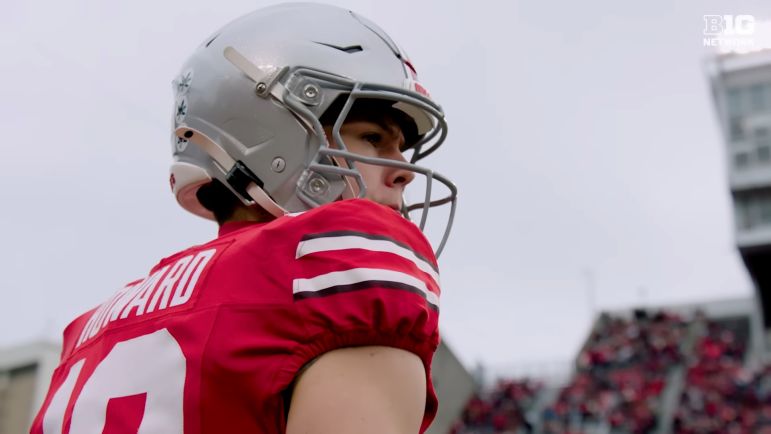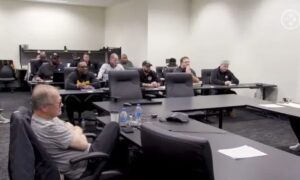As we’ve written several times this week, long live the Tush Push. At least for another year. A resolution effectively banning the play fell short by two votes during league meetings earlier this week, meaning the play will be used for the 2025 season. Given the Pittsburgh Steelers’ short-yardage struggles, it’s a tactic that should be on their radar. But neither Aaron Rodgers nor Mason Rudolph are good options to get under center and barrel ahead. Some, like the PPG’s Ray Fittipaldo, have suggested Will Howard to run it.
On paper, it makes sense. Howard is a big and strong quarterback capable of plowing ahead to gain a yard. In college, he was regularly used in designed QB power designs. As a backup quarterback in Pittsburgh, it would actually create a role to maximize the entire 53-man roster.
But there’s a problem: Howard probably won’t be eligible to do it.
That has nothing to do with the rules of the play. It remains legal, and teams have gotten creative, putting backups or non-quarterbacks under center. It has everything to do with the rules of being a third-string quarterback.
After the disaster the San Francisco 49ers fell into in the 2022 NFL Championship Game, losing both their quarterbacks and being left without anyone to throw the ball, the NFL revised its emergency quarterback rules. Now, a third-string quarterback is eligible to dress in uniform. Russell Wilson did weekly while rehabbing his calf injury during the first six weeks of last season. But they can only play if the quarterbacks ahead of him are injured and unable to play.
From the 2023 bylaw that updated the modern-day ruling.
“An Emergency Third Quarterback is permitted to enter a game only if the club’s two active quarterbacks are unable to play either by disqualification or injury, including, for example, if QB1 is unable to play and QB2 is being evaluated for an injury.”
In fact, there are even more requirements to the rule. Upon entering the game, the emergency third-string quarterback must immediately report to the head referee prior to the first snap, just as an eligible offensive lineman must report (though the quarterback only has to do so once, unlike the lineman who must “report” each time). Failure to report will lead to a 15-yard unsportsmanlike conduct penalty.
The head ref will confirm with the head coach, in this case Mike Tomlin, that the other two quarterbacks are unavailable to play due to injury. The referee will then inform the opposing team and make a formal announcement to the crowd. Further, an emergency third quarterback can’t enter the game because of the poor play of the quarterbacks ahead of him, or if a quarterback has an equipment issue that temporarily takes him out of the game.
All of that is to say, assuming Howard is the weekly inactive/emergency third quarterback, he can’t play unless the two guys ahead of him are hurt. So he can’t take the field to run the Tush Push. And suppose Howard was ever inserted into the game on an emergency basis. In that case, Pittsburgh may be wary of using him for the Tush Push on the chance he’s injured in the pile, leaving the Steelers officially without a quarterback.
The only workaround is for Howard to avoid being an emergency third quarterback. He could dress without the label, though someone else would have to be inactive in his place. Or he’d have to serve as the No. 2, unlikely assuming Rodgers and Rudolph are in front of him.
It’s a lot of text for a niche play Pittsburgh has barely used and a play that will – probably – be outlawed in future years. But it’s the hot topic of the week, and there’s a legitimate conversation about how the Steelers can improve in short-yardage situations. It was a serious pain point. But Howard, unless he’s not the third-string quarterback, won’t be the solution.








